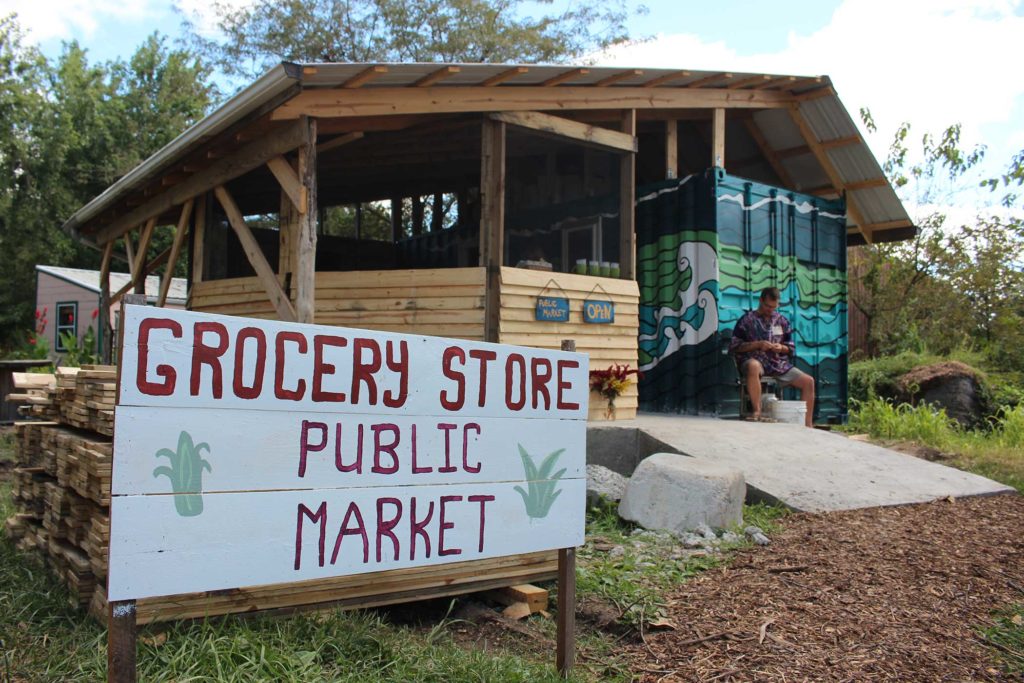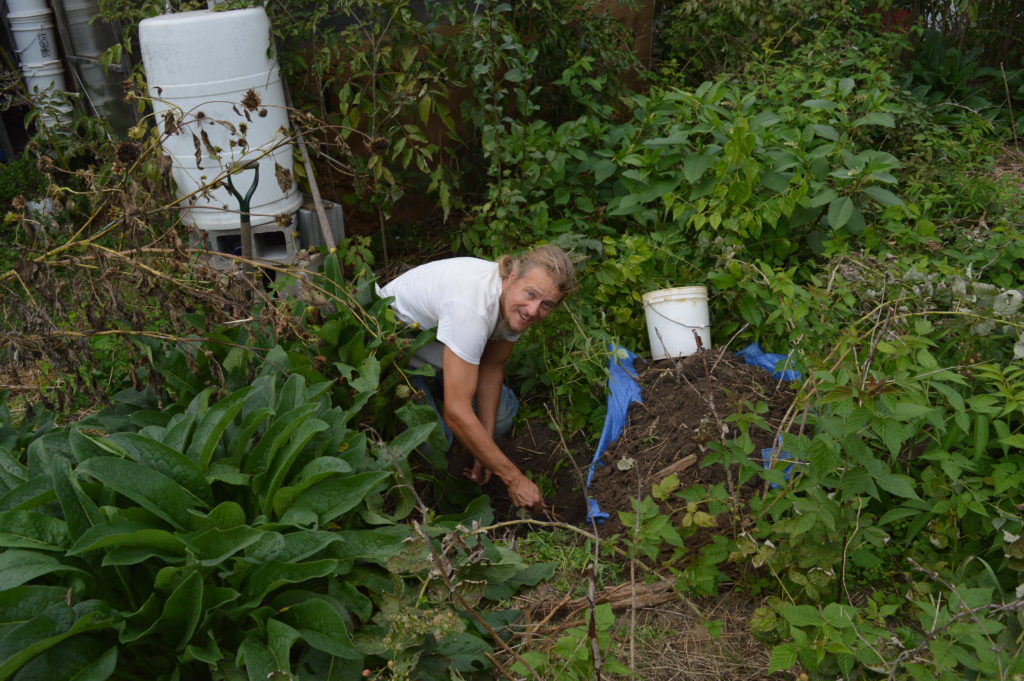A sustainable future starts with the small things. Carolyn here, with some ideas to help get you moving along the path to a more earth-friendly tomorrow. With endless ways to reduce, reuse and recycle, folks at Dancing Rabbit Ecovillage implement a variety of tactics to live lightly.

A lot of waste comes simply from the food we eat. There are myriad ways to reduce your carbon footprint, while also investing in your local economy via the choices you make, when buying food. Here are some small things that you can do to help make your life more eco-friendly, and make your belly deliciously full.
1. Reduce Your Trash: Buy In Bulk
Every time you make a purchase, you are also spending your money on trash. Packaging is a huge contributor to our global waste stream. Some easy ways you can reduce the wastefulness of buying goods are to buy in bulk, and bring your own reusable containers. If you don’t live in a place with access to a bulk food store, try getting together with some neighbors and create a bulk buying group using a food delivery service like United National Food Inc. (UNFI); this is one of the sources for awesome organic bulk foods and supplemental vegetables used by the folks at Dancing Rabbit.
2. Invest In Your Local Economy: Join A CSA Or Go To Your Local Farmers’ Market
Buying local foods has a variety of benefits. You get to support local farmers doing small-scale work that enriches the soil and biosphere. Food from your farmers market, or a community-supported agriculture group (CSA), will typically be more nutritious, since it is picked ripe, in season, and delivered to you soon after harvest. There is also the perk that because you are buying from a local supplier, your food has not traveled thousands of miles to get to you; this reduces the carbon footprint of your diet significantly. On top of those reasons, vendors at farmers markets also often use minimal packaging. Sometimes, you can return trays, glass jars and other packaging to be reused for the next batch of vegetables, or items like honey and jam. Voting with your dollars at your farmer’s market is also a great way to show producers that we are saying no to trash and yes to nutritious local foods.
3. Gardening: Grow Some Greens To Save Some Green

A way to really reduce waste, improve your carbon footprint, and get some delicious food onto your dinner table is to get out your green thumb and plant a garden. Even container gardening with suitable plants can benefit you, the planet, and your diet. It is economical, as well as a stress reliever, to get your hands dirty and grow some things. By incorporating permaculture design principles and square foot gardening tactics, like some folks do at Dancing Rabbit, you can boost your yield on a small plot. You can even forage for nutritious wild foods that grow in abundance in many areas, such as nettles, dandelions, blackberries, and more.
If you are ever struggling to reduce your carbon footprint, here are some easy tenants to follow: reduce the distance your food has to travel, and choose foods with the least amount of packaging.
What are some ways that you reduce, reuse and recycle? Let us know, because sharing is caring and we all need to learn new ways to make a more sustainable future possible.
If you are interested in seeing some hands-on ways to improve your carbon footprint, check out our visitor program, where you can dive deep into a sustainable community full of ways to make our planet and our lives more healthy!
